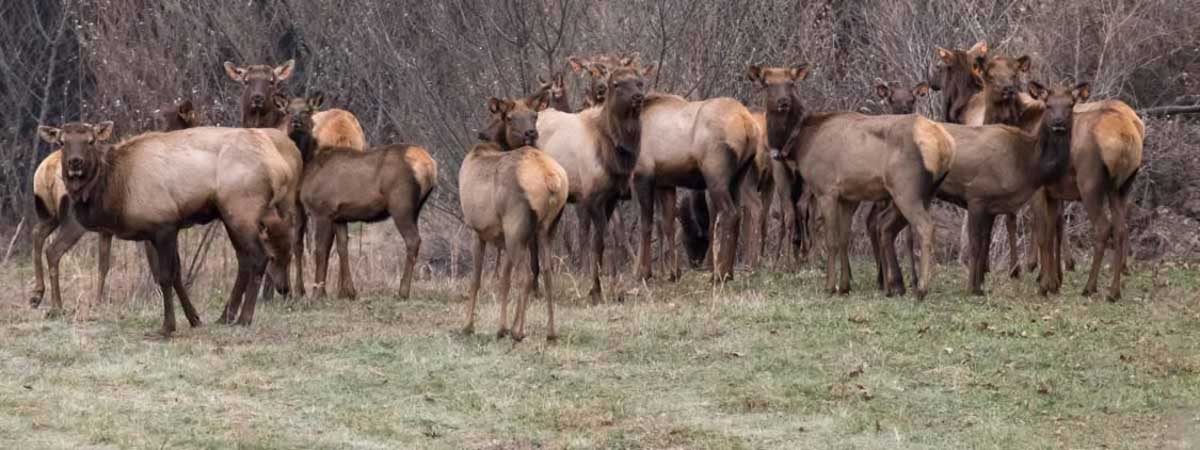It looks like West Virginia’s elk population will grow nearly five-fold to about 100 or more animals by this summer. The West Virginia Division of Natural Resources (DNR) reached an agreement with the U.S. Department of Agriculture, U.S. Forest Service and Land Between the Lakes (LBL) National Recreation Area in Kentucky to acquire 17 more elk as part of the state’s restoration effort.
“As a lifelong sportsman, I am proud to work with our state and federal partners to make elk restoration in West Virginia a success story,” said Gov. Justice. “This is great news for all West Virginians as we continue to restore this magnificent native species to our state.”
This will be the second group of elk to come from LBL. In late 2016, the Rocky Mountain Elk Foundation assisted with the capture and transportation of 24 elk to the Tomblin Wildlife Management area in southern West Virginia.
The new additions to West Virginia’s elk herd should arrive by mid-February and be released before the anticipated arrival of 70 additional elk from Arizona later this year.
“Combined with the previous elk we received from LBL and the elk we are in the process of acquiring from Arizona later this year, West Virginia sportsmen and women will see increased wildlife recreation opportunities and economic growth well into the future,” said DNR Director Stephen McDaniel. “We want to thank all of the agencies involved for their work in making this happen.”
DNR Elk Project Leader Randy Kelley said the elk population at LBL is controlled to ensure the herd stays healthy. Occasionally, after the calving season, elk are moved to maintain the herd size. Kelley said DNR’s previous work with LBL will make capturing and moving this second group of elk easier for staff.
“We have vetted this herd in our previous transfer, so we are confident that we are receiving healthy animals that can thrive in our habitat,” Kelley said. “Additionally, since LBL will be capturing all their animals for their required whole-herd disease test, it will reduce the involvement for the DNR and eliminate the stress that would result if the animals were moved at another time.”
